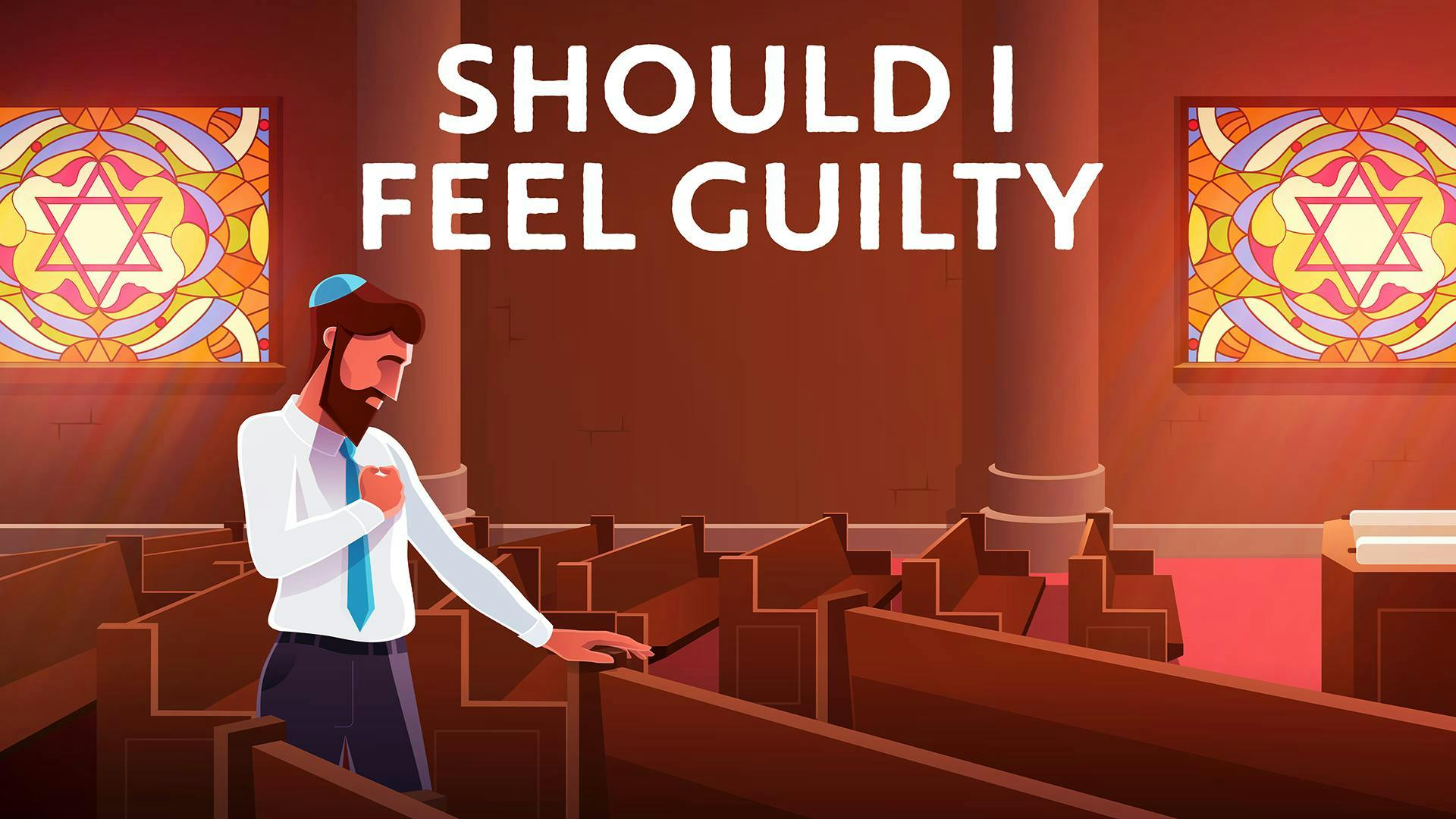Kinot | Tisha B'Av 2025: What are Kinot? Explanations and Meaning
What Are Kinot? Why Do We Say Kinot on Tisha B'Av?
By Sarah Rashba | 10 July 2025 | 7 Minute Read
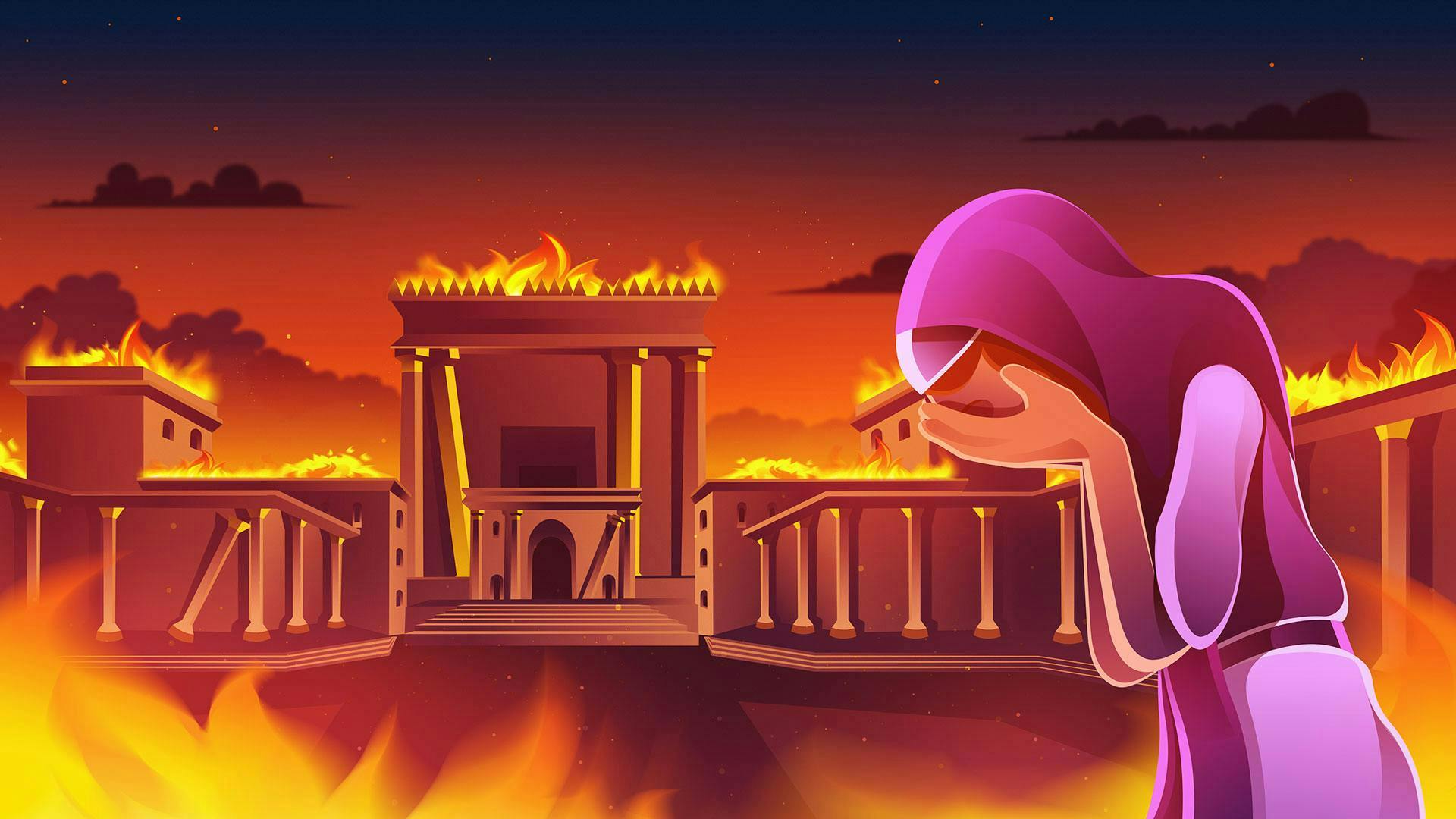
Looking for more?
We have hours of delightful videos and podcasts to enhance your Yamim Noraim experience.
What Are Kinot? Why Do We Say Kinot on Tisha B'Av?
On Tisha B’Av (the 9th of Av), Jews gather in synagogues to mourn the destruction of the Beit HaMikdash (the ancient Temple). Both at night and the following morning, we recite kinot (elegies) that reflect upon themes of tragedy and loss, getting us into the experience of mourning.
Kinot follow the example of Megillat Eichah, written by the prophet Jeremiah after the destruction of the first Temple. The first kinot were written to mourn the events surrounding the Destruction and the subsequent exile. More were added when the second Temple was destroyed 490 years later.
Over time, as we experienced overwhelming national tragedies, more kinot were added to the Tisha B’av corpus. The destruction of entire communities at the hands of marauding Crusaders in the Middle Ages especially generated many new kinot. More recently, additional kinot were written lamenting the events of the Holocaust. I wouldn’t be surprised if a new one was composed to commemorate the Simchat Torah massacre of 2023. Through these added kinot, Tisha B’Av developed from a day focused on the destruction of the two Temples to a day mourning the tragic history of the Jewish people in exile.
The Purpose of Kinot
What is the goal of reading these kinot on Tisha B'Av? Why spend so much time — in some communities, it could be the entire morning — reading about the tragedies of our national history?
The main purpose of the kinot is to help us fulfill the obligation to mourn on Tisha B’Av. They contain graphic imagery describing some of the terrible things we’ve endured as a people since the destruction of the first Temple. Understanding the historical context of the kinot and recognizing how long we’ve suffered adds a whole new layer to our mourning.
Still, there’s a problem. As much as this is true in an academic sense, the reality is that for a number of reasons, kinot are notoriously difficult to understand. Experientially, reading the kinot without understanding what they’re saying is not exactly going to do much for your emotional state. In other words, the idea of reciting kinot to tap into feelings of mourning is a good one, but the execution often doesn’t seem to work.
What Makes Kinot so Hard to Get?
First of all, kinot are written in a poetic style that is hard for even native Hebrew speakers to crack. The words are often unfamiliar, and the structure adds its own level of difficulty, like reading a sonnet.
And even if kinot weren’t so complex, they’re poems. Poems are meant to be taken in slowly, with thoughtful nibbles and careful bites, interspersed with reflection. Sometimes, you just need to sit with a line and read it a couple of times to let it sink in. But kinot are often treated as just another text to get through, speed-read at 200 miles per hour without the consideration they need to reveal their meaning and the message they contain.
Finally, even if we assume that you can understand what the kinot are saying, most of the events described in kinot are part of long-gone history; in some cases, ancient history. While you can try all the tricks to place yourself in the sad scenes described in each kinah, at the end of the day, it’s hard to mourn for something you never knew and never experienced. And if you’re like me, there’s nothing worse than trying to connect to something you know you’re supposed to feel, while a little voice in the back of your head whispers, “Who am I kidding? What am I even saying, anyway?”
Unlocking the Kinot
How can we unlock the meaning of the kinot and access the emotions they’re meant to engender? Is there a way for the time spent on these old texts to actually help me feel something?
The answer is yes. The key to understanding kinot is to notice something that the authors of the kinot encoded just below the surface of the text.
Even if you have just a basic knowledge of Tanakh, Talmud, and Midrash, you will likely notice that the kinot are filled with references and allusions to Biblical and Rabbinic sources, one layered upon the next. For example, many kinot are structured as building on the word “Eichah,” the very first word of Megillat Eichah — a word which also appears in the Garden of Eden. In Genesis 3, right after Adam and Eve eat from the Tree of Knowledge, the Torah records that God comes looking for them in the Garden of Eden and calls out, “Ayekah — Where are you?” In Hebrew, “ayekah” is spelled exactly the same as “Eichah.” Noticing that connection indicates that in some way, the author of Megillat Eichah, and the authors of the kinot by extension, want you to be thinking about the Garden of Eden, of all things, while reflecting on the destruction of the Temple! (If you’re intrigued about what this connection might mean, this Aleph Beta course is for you.)
The authors of the kinot made these connections all over the place. They are quite consciously continuing conversations that were begun by our ancient Sages through these textual clues. Just like in all poetry, there is so much richness in the kinot that can really only be accessed by someone who recognizes the relevant sources and understands how the author of the kinah is using them.
Once you understand the connections the author of a kinah was making, once you see the message he was trying to convey, you have something to sit with and reflect on while saying the kinah. This lets you do two things: first, it gives you a lens to use to really understand what the author of the kinah was trying to convey about the tragedy he was describing. This helps you connect to it in a deeper way than just reading the words on the page and trying to imagine yourself into whatever he wrote. Second, by understanding the message in this deeper way, you’ll be able to apply the kinah’s message to the present, to your reality – where it’ll hit that much harder.
If God loves us, why does God let bad things happen to us?
Dive Deeper with Aleph Beta’s Kinot Webinars and Kinot Guide
How can we unlock the meaning of the kinot and access the emotions they’re meant to engender? Is there a way for the time spent on these old texts to actually help me feel something?
The answer is yes. The key to understanding kinot is to notice something that the authors of the kinot encoded just below the surface of the text.
Noticing and deciphering the rich intertextual connections throughout kinot is sure to add meaning to your recitation of these beautiful but cryptic poems. For the last four years, Rabbi Fohrman, Aleph Beta's Lead Scholar, and the other Aleph Beta scholars joined on Tisha B'Av to share the poignant and relevant messages they found hidden within the language of kinot. Check out all four webinars here, and uncover messages that will resonate long after that empty feeling in your stomach goes away.
Prefer to read instead of watch? Download our kinot guide to gain a richer understanding of kinot.
More Tisha B'Av Videos

Kinot Live With Rabbi Fohrman
Video series • Part 1 of 4 • 3 hours, 42 min
Join Rabbi Fohrman and the Aleph Beta team for in-depth readings and discussions of select Kinot. These videos are live recordings from our annual Tisha B'Av morning "Kinot Unlocked" events. You can catch up on all past years here. We hope these beautiful texts will take on new meanings and allow you to experience a more connected Tisha B'Av.

Why Does God Let Us Suffer?
Video series • Part 1 of 6 • 11 min
If God loves us, why does God let bad things happen to us? This question may be impossible to answer, but on Tisha b’Av it’s just as impossible to ignore.

What Rachel Imeinu Teaches Us About Mourning
Video series • Part 1 of 5 • 8 min
Mourning on Tisha B’Av may begin with the Temple, but it cannot end there. The familial conflict between Rachel and Leah offers a powerful lesson on how we can take the first steps towards fixing our national tragedy by addressing our personal relationships.
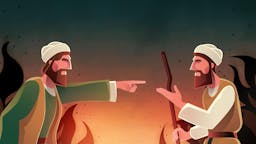
Kamtza And Bar Kamtza: What Is Baseless Hatred, Anyway?
Video series • Part 1 of 5 • 3 min
When was the last time that you hated someone for absolutely no reason? Could it be we’ve been misunderstanding the true meaning of “baseless hatred” this whole time?
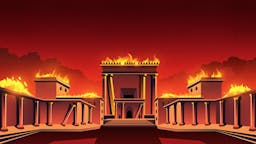
How Am I Supposed To Appreciate The Loss Of The Beit HaMikdash?
Video series • Part 1 of 7 • 9 min
It’s one thing to mourn the suffering of actual people, but how are we supposed to feel genuinely sad over the loss of a building?
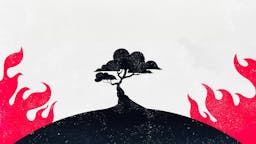
Megillat Eicha And Its Secrets
Video series • Part 1 of 2 • 57 min
What does Eicha have to do with the garden of Eden? At first glance, not much. But if we look closer, it turns out that the Megillah is actually echoing language first used in the beginning of Genesis. Uncovering the deeper meaning of this connection can shift the way you think about Tisha B’Av.
More Tisha B'Av Content
Dive Deeper
Looking Closer at Kinot & Readings of Select Kinot
What are Kinot all about? All of the kinot of Tisha B’Av are attempts to fulfill the requirement to mourn on Tisha B’Av. The most common topic that they address is the destruction of the First and Second Temples. Many of the kinot are a riff on Eicha (Jeremiah's Lamentations) borrowing key phrases from the book and expanding upon them – with a handful of them actually beginning with this loaded word, ה ָיכ ֵא, Eicha. These kinot imagine, in greater and more grotesque detail, the misery that befell the Jewish people in the wake of the destruction of the Holy Temple. For example, Kinah #17 "אִם תֺּאכַלְנָה נָשִׁים” How Could It Be That Women Ate?”) muses on some of the most disturbing lines in all of Megillat Eicha (“How could it be that women ate their own offspring, the ones they cared for?” “How could it be that the tongue of the nursing infant would cleave to his palate in thirst?”) and then, troublingly, offers its own questions, like: “How could it be that the flesh of the fathers were prepared for their sons to eat?” But it’s not all about the destruction of the Temple. You will find kinot that relate to other tragedies as well. In fact, the Mishnah (Ta’anit 4:6) explains that we fast on Tisha B’Av in commemoration of no fewer than five tragic events that took place on that day (with the destruction of the First and Second Temples occupying two slots on the list).
The Five Tragedies
- The sin of the spies. Before the Israelites entered the land of Israel, 12 spies ventured out to explore the land. The spies returned with a negative report, full of false warnings about the danger that awaited in the land of Israel, like: “It’s a land that devours its inhabitants!” and “We can’t go up against the people who live there; they are stronger than us.” After hearing and believing these reports, the Israelites cried, demonstrating a lack of faith in God. This generation was therefore punished and not allowed to enter the land. This story is described in Numbers 13–14. (Watch this video to explore what the real sin of the spies was).
- The destruction of the First Temple. The First Temple was destroyed by the Babylonians, led by Nebuchadnezzar. According to the Talmud, the Temple began to burn on the ninth of Av and continued to do so through the tenth. (Several mourning practices, including refraining from listening to music, are observed through midday on the tenth of Av for this reason.)
- The destruction of the Second Temple. The Second Temple, built by Ezra and Nehemiah, was destroyed by the Romans. This resulted in the scattering of Judea and began the Jewish exile from the Holy Land.
- The destruction of Beitar. The Romans suppressed the Bar Kokhba revolt and killed over 500,000 Jews, destroying the city of Beitar, on July 8th, 135 CE, or the ninth of Av, 3892.
- The Temple Mount was demolished. Turnus Rufus, the Roman commander who crushed the Bar Kokhba revolt, razed the site of the Temple and its surrounding area (135 CE).
Kinah #3
"בְּלֵיל זֶה,” On This Night”), for example, mentions all five of these tragedies, paying particular attention to the first of them: the sin of the spies. The author of this kinah is discretely referencing a Midrash (Ta’anit 29a) that suggests that the sin of the spies took place on the 9th of Av — and that on that occasion, God decided that that day would be a day of tragedy and mourning forever after. The Midrash recalls that when the people heard the spies’ report, they lost their will to conquer the Promised Land, and they cried all night long. Says the Midrash:
"אמר להם הקב"ה אתם בכיתם בכיה של חנם ואני קובע לכם בכיה לדורות"
The Holy One, Blessed be He, said to [the people]: “You cried needlessly that night, and I will therefore establish for you a true tragedy over which there will be weeping in future generations.”
And so we read in Kinah #3: “[God] decreed against our ancestors when they rebelled and attached many terrible troubles to this day, a day designated to be struck by misfortunes.”
By the way, if you’re curious to understand just what was so bad about the sin of the spies — such that it basically launched this national day of mourning as we know it — we have a lot of videos that grapple with that question. We recommend checking out “How Can We Relate To Such A Vengeful God?”, “How Can I Trust God When I Don't See Him?”, and “The Promised Land: Good or Bad?"
Many Tragedies, One Source
This idea that the greatest tragedies of our people have all occurred on the same day of the calendar, and that we are meant to mourn them as one, what are we supposed to make of that? One possible religious “takeaway” might be this: that our national tragedies do not happen by chance.
When the Babylonians destroyed the First Temple, when the Romans destroyed the Second Temple, when the Bar Kokhba revolt was quashed, when the Temple Mount was razed — yes, on the surface, these acts were perpetrated by human actors, but don’t make the mistake of thinking that they were mere accidents of history. They were implementations of God’s plan. The cause for all of these tragedies is the same: God’s displeasure with the behavior of the Jewish people. And thus the only way to repair the damage, to rebuild the Temple and to prevent future suffering, is with proper behavior.
The Themes Behind the "New" Kinot
However, the kinot don’t stop with the five “traditional” tragedies that are detailed in the Mishnah. A whole new wave of kinot were written to commemorate another set of tragedies, the Crusades, describing the violence that medieval Jews suffered at the hands of the zealous Crusaders who were making their way to the Holy Land. The events of the Crusades occurred roughly 1,000 years after the destruction of the ancient Temple.
The Crusades
For example, Kinah #25 "מִי יִתֵּן רֹאשִׁי מַיִם,” (Who Can Grant That My Head) describes the massacring of the Jewish communities of Speyer, Mainz, and Worms (located near the present-day French-German border) in 1096. Its portrayal of Jewish suffering is graphic and difficult to read: “Corpses are strewn about, naked men and naked women, their bodies like carrion for the wild beasts of the land and for the animals, a nursing infant with a man of old age, young men and young maidens.”
Another kinah from this period, Kinah #41 "שַׁאֲלִי שְׂרוּפָה בָּאֵשׁ,” (Seek, O Torah, Consumed By Fire), describes the horrific burning of the Talmud and other Jewish books in the public square in Paris in 1242.
The author of that kinah speaks directly to the Torah itself, asking: “How is it that you, who were given by God, can be consumed by fires made by flesh and blood? And yet the transgressors who burned you didn’t even get singed?” It brings to life the desperation that must have plagued the Jews who lived during this time, when Christian leaders insisted that God had “given up” on His chosen people — and history seemed to bear that out, with Jews struggling under poverty and persecution to maintain adherence to their Torah.
But if the Mishnah only details five events that Tisha B’Av commemorates, then why were these new kinot about the Crusades incorporated into the liturgy for Tisha B’Av? Because, in the words of Rabbi Kalonymus ben Yehuda, the author of Kinah #25: “Since one may not add a new day of mourning… On Tisha B’Av, my mourning I will arouse, and I will eulogize and I will wail and I will weep with a soul that is bitter.” In other words, although Tisha B’Av was originally construed as a day of mourning for only these five tragic events, Rabbi Kalonymus ben Yehuda sees it as the “source,” in some sense, of all of the grand tragedies that have befallen the Jewish people. And so on Tisha B’Av, we mourn it all: the sin of the spies, the destruction of the Temple, the destruction of Beitar and demolition of the Temple Mount, but also later national tragedies like the Crusades.
The Holocaust – and Controversy
In fact, some collections of kinot contain even “newer” kinot – 20th-century compositions that focus explicitly on the horrors of the Holocaust – although there remains some debate as to whether these contemporary kinot should occupy a place in the service alongside the classic, time-honored kinot of old.
Some rabbinic leaders oppose their inclusion, raising the question of how much time must pass before you can adequately process and attempt to describe a tragedy, especially one on the scale of the Holocaust. Others contest the idea cited above: that Tisha B’Av should be seen as a “catch-all” for all of the national tragedies of the Jewish people. The conversation is a rich and complex one and continues to this day. The recitation of these Holocaust kinot has nonetheless become common practice in many communities. Common inclusions are "זכרו נא” (Remember, Please!) written by Rabbi Shlomo Halberstam (the Bobover Rebbe) and "הזוכר" (He Who Remembers), written by Rabbi Shimon Schwab.
Feeling the Kinot of Tisha B’Av
How can you enhance your experience of reciting Kinot and really connect with the sense of mourning? The first step is to simply to experience them. Start by getting yourself a good English translation. The Koren, Artscroll, and Rosenfeld translations of kinot are copyrighted and can be purchased online or at bookstores. And Sefaria has English translations of many of the Kinot.
In the days leading up to Tisha B’Av, set aside 5–10 minutes a day to read through one kinah — so you will have some familiarity with them when the time for the service comes.
On Tisha B'Av (Day 9) it is customary to attend a public reading of the kinot. Don’t worry about keeping pace with the congregation, and don’t worry if much of what you are reading seems obscure or esoteric. Look for what speaks to you. Read the kinot carefully and allow their words – their power and meaning, and their horror – to strike you.
Remember that the kinot are arranged roughly in order of when they were composed, and the effect is that as you read, you are taking a mournful journey through the most painful moments in Jewish history, through the eyes of those who lived through them. Through these kinot, the authors attempted to capture their experience and share it with us.
As the kinot progress, you can see the building of sorrow throughout the generations. Today’s Jewish community must contend not only with the five tragedies of the Mishnah but with so much suffering since. Even if we can’t personally relate to the suffering that is described, if we are blessed to have enjoyed a life of relative security and prosperity, we are likely no more than one or two links removed from someone who lived through the horrors of the Holocaust.
Thinking About Tisha B'Av Kinot
Above is one way to read the kinot. But it is not the only way. If you have some knowledge of Tanakh, Talmud, and Midrash, then you will immediately notice that the kinot are filled with references and allusions to Biblical and Rabbinic sources, one layered upon the next.
The authors of the kinot are quite consciously continuing conversations that were begun by our ancient Sages, and there is much richness in the kinot that can really only be accessed by someone who has been shown the relevant sources and understands how the author of the kinah is commenting upon them.
To learn all of the kinot in this kind of depth is an ambitious undertaking, probably too much to take on in a single year. Instead, we invite you to focus on one of the kinot in particular and to learn it deeply, to view it as a case study of how kinot work and how multi-dimensional they are. Below we provide an in-depth study of Kinah #26, "אָז בַּהֲלוֹךְ יִרְמְיָהוּ," (Then Jeremiah approached).
An In-Depth Study of Kinah #26
"אָז בַּהֲלוֹךְ יִרְמְיָהוּ," (Then Jeremiah approached), tells a mysterious story. It imagines the prophet Jeremiah – the one who prophesied the destruction of the First Temple, who tried, without success, to persuade the Jewish people to turn back to God – as he paid a visit to the graves of the patriarchs (Abraham, Isaac, Jacob, and Moses). The implication of the kinah seems to be that Jeremiah wanted to inform the patriarchs that God was about to destroy the Temple and exile the Jewish people from their land, hoping to spur the patriarchs to prayer. Maybe they could petition God or otherwise save their descendants.
According to the author of the kinah, how do the patriarchs – Abraham, Isaac, Jacob, and Moses – react when Jeremiah tells them the news? First, they cry. But then, each speaks to God, taking his turn to try to persuade God not to follow through with His decree. (In doing so, by the way, they are following in an audacious tradition of arguing directly with God to save the Jewish people. For a stunning example of this from earlier in biblical history, see our video, “Moshe's Benevolent Chutzpah.”
In powerful succession, each patriarch references some story or verse from Tanakh – either an assurance from God that the people would always be taken care of, or some merit of their own that they hope might protect the people. It’s as if they are saying to God: “God, what about this promise? Won’t You keep this promise?” and “And what about when I did ___? Did that mean nothing to You? Isn’t that enough to protect my people?” And to each, God responds with a quote or retort of His own, countering that the people have been sinful and are deserving of punishment, because they have somehow managed – through their behavior – to annul the original promise or deplete the original merit.
For example, Abraham stands up and says: “What about the 10 tests that I passed? Did that mean nothing to You? Isn’t that enough to protect my people?” (The Bible does not speak explicitly about the “10 tests” of Abraham; this is a reference to a Rabbinic idea that is first introduced in Pirkei Avot 5:3.) God responds: “It’s not enough. Your people committed idolatry.”
Isaac stands up and says: “What about my lying still when my father bound me as a sacrifice atop a mountain and nearly burned me on the altar?” (This is a reference to the Akeidat Yitzchak, the Binding of Isaac, described in Genesis 22, and analyzed in the video, “Why Did Abraham Bind Isaac?”) But God responds: “The people defiled that same mountaintop, Mount Moriah.” (Mount Moriah ultimately become the site of the Holy Temple.) Jacob and Moses also stand up to plead their case, but neither of them are able to persuade God to change His mind.
At this point in the kinah, the frame moves to the matriarchs – we are to imagine that Jeremiah has now awakened and informed Leah, Rachel, Zilpah, and Bilah – and in response, they too weep. But something about these matriarchs spurs God’s mercy, for God immediately responds: “O pure ones, return to your places of rest. I shall surely fulfill all of your requests… I shall bring back your children from exile!” So while none of these petitions succeed in actually getting God to withdraw His decree – the Jewish people will still be exiled from the land – it will only be a temporary exile. The kinah ends with this comforting reassurance that, in the long arc of history, the Jewish people will survive their exile and return to their land.
As you read through this kinah, the following question might occur to you: What is it that spurs God, in the end, to respond mercifully in the way that He does? At the start of the kinah, it seems that He is deaf to the pleas of Abraham, Isaac, Jacob, Moses, so why does God suddenly change His tune to one of comfort and reassurance? This, indeed, is the $64,000 question of Kinah #26. And this isn’t merely a local question on the kinah itself. It’s a grand question with much larger implications: What is it, exactly, that works to invoke the mercy of God? If you are arguing with God, pleading that He show mercy, what kind of argument does God find pleasing?
The kinah itself gives no indication of why God changes His tune. In order to understand why, you have to realize that this kinah is a part of a much larger conversation, and it is subtly referencing other Jewish sources – both Biblical and Rabbinic – in order to make its point.
For starters, it takes its cues from a Midrash that was written by our ancient Sages (Eichah Rabbah intro. 24) which first envisions this mysterious visit of Jeremiah’s to the graves of the patriarchs… but it doesn’t end there. That the Midrash is itself commenting on another text: on a prophetic passage from the Biblical book of Jeremiah (31:14- 16)... and the Book of Jeremiah is, in turn, commenting on another text: a story from the Book of Genesis. In other words, there are four texts in play here, four layers of meaning, each one building on the next – and it is only by excavating and understanding each one that a person can hope to understand what is going on with this kinah.
For one thing, if you open up the Book of Jeremiah, you’ll find that the story there is a little bit different. The Book of Jeremiah doesn’t describe all of the patriarchs and matriarchs weeping at the exile of the Jewish people. It only talks about Rachel. In the words of the biblical text:
קוֹל בְּרָמָה
There’s a voice that’s heard on high
נִשְׁמָע נְהִי בְּכִי תַמְרוּרִים
It is crying bitter cries
רָחֵל מְבַכָּה עַל־בָּנֶיהָ
Rachel weeps for her children
מֵאֲנָה לְהִנָּחֵם עַל־בָּנֶיהָ כִּי אֵינֶנּוּ
She refuses to be consoled, for they are being led away (Jeremiah 31:14)
The Book of Jeremiah also describes God’s response to Rachel, and that too is slightly different from what we read in the kinah. God hears Rachel’s lament and tells her:
כִּי יֵשׁ שָׂכָר לִפְעֻלָּתֵךְ
There is a reward for your actions...
נְאֻם־יְהֹוָה וְשָׁבוּ מֵאֶרֶץ אוֹיֵב
And they will come back from the land of the enemy. (Jeremiah 31:15)
So it seems that Rachel plays a key role in answering our question — it’s not the matriarchs as a whole, but rather Rachel who causes God to change His tune. The petitions of all of the other patriarchs, even the matriarchs, were somehow insufficient, but Rachel’s petition was successful in invoking God’s mercy. But why? What was it about Rachel’s petition?
In the kinah, Rachel’s “petition,” if you want to call it that, is in the form of her crying. She doesn’t say anything before God, not like the patriarchs. She merely weeps. And so it seems in the Book of Jeremiah, at least at first glance. But take a closer look at the words of the Book of Jeremiah, at God’s response to Rachel: “There is a reward for your actions.”
What is God rewarding? What is God responding favorably to? To Rachel’s actions. And which actions are those? Is it the act of her crying? Is there something uniquely powerful about the tears that this matriarch sheds for her descendants? Is the lesson of the kinah that tears have that kind of power, the power to move the Almighty to mercy? Or is it something else that Rachel did, some other action… perhaps something that she did earlier in her life, some righteous deed?
The kinah doesn’t mention any such deed, nor does the Book of Jeremiah seem to. But if you take a closer look, you’ll find that there’s a breathtaking story that is hidden just between the lines of the Biblical text, a story whose echoes suffuse Jeremiah’s words. It’s a story of something that Rachel once did, an incredible “something,” an act whose power actually did stir God to mercy, an act much more powerful than tears alone. What was that “something”? How can we pick up on the clues in Jeremiah’s words to uncover it? What light does it shed on this kinah? And how might it affect the way that we understand what God seeks from us on Tisha B’Av? These might seem like grand questions — but grand answers await in our animated feature video on “The Power Of Rachel’s Tears.” The video doesn’t treat the kinah directly but rather focuses on the other three “layers” that it references, both Biblical and Midrashic, and offers a conclusion that just may change the way that you experience this day of fasting and mourning.
What is Aleph Beta?
Aleph Beta is a unique kind of Torah library. Led by our founder, Rabbi David Fohrman, we are dedicated to high-level, textual Torah learning for adults that is intellectually and spiritually sophisticated, that enlivens your Jewish practice and helps you forge a deeper connection to God. Whether you’ve been learning in yeshiva for years or you’re just beginning your Torah journey, you’re sure to find something meaningful and surprising waiting for you here.
Browse our library of over 1,000 beautifully produced animated videos, podcasts, deep dive courses, and printable guides. Topics include the weekly parsha, Jewish holidays & fast days, laws & mitzvot, prayers, relationships, big philosophical ideas and more. Have something to say at the Shabbos table that will amaze your family and guests and bring deep meaning into their lives.



